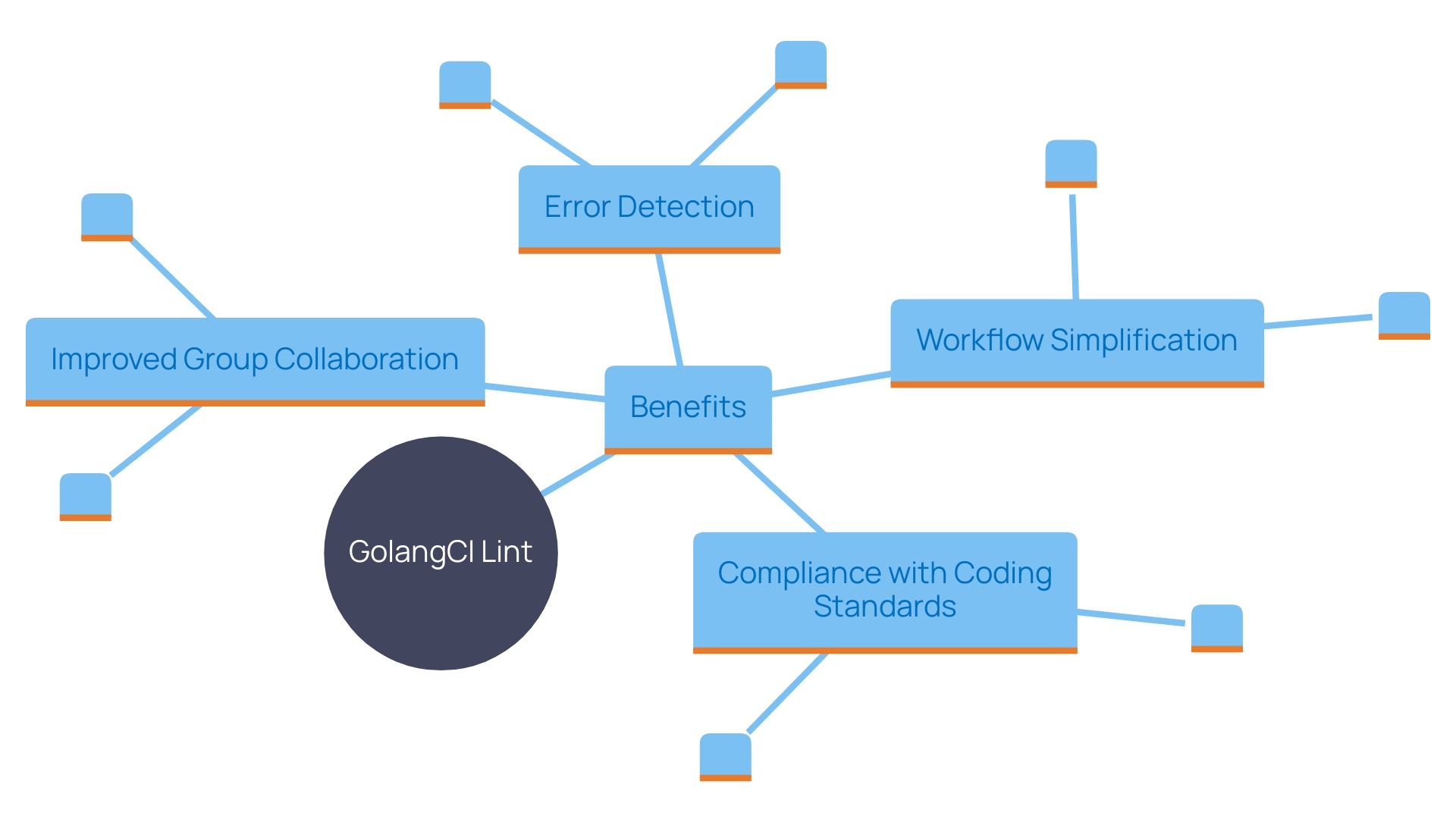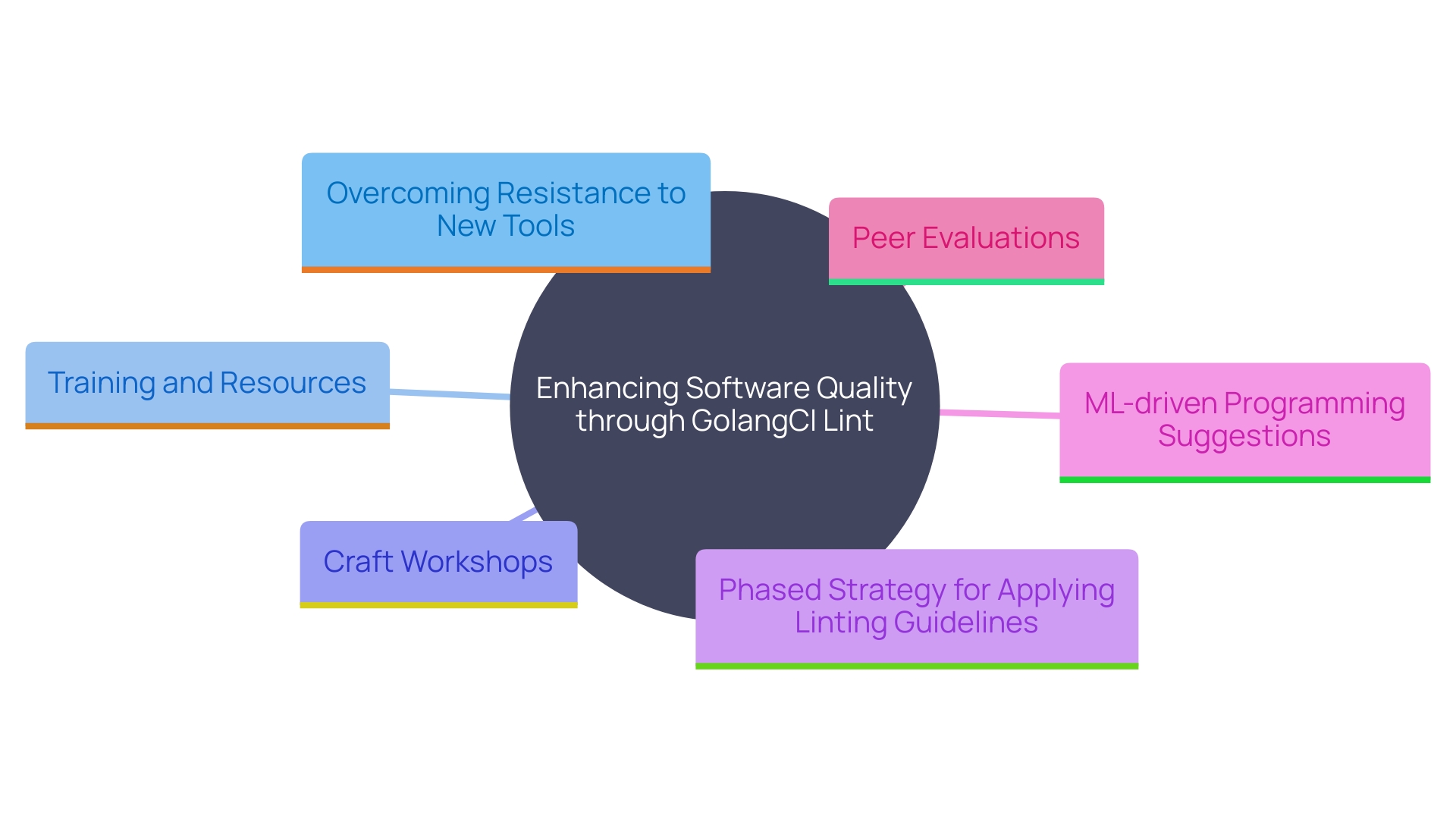Introduction
Ensuring code quality and consistency is paramount for any development team, and GolangCI Lint stands out as an essential tool for Go developers. By combining multiple linters into a single executable, it helps identify potential issues early in the development process, reducing the time spent on debugging and refactoring. This not only streamlines workflows but also enforces coding standards and best practices, enhancing collaboration within the team.
When integrated into Continuous Integration/Continuous Deployment (CI/CD) pipelines, GolangCI Lint ensures that only compliant code is deployed, mitigating the risk of bugs in production. Setting it up is straightforward, with customizable configurations to suit project-specific needs. Despite the initial challenges of adoption, the long-term benefits of improved code quality and developer productivity are undeniable.
Benefits of Using GolangCI Lint
GolangCI Lint is an indispensable tool for Go developers aiming to boost code quality and maintain consistency across projects. By merging several lines into a single executable, it enables groups to detect possible errors early in the development process, significantly reducing the time spent on debugging and refactoring. This proactive method not only simplifies workflows but also encourages compliance with coding standards and best practices, improving overall group collaboration. As one specialist observes, "Linters examine your project and emphasize possible problems, directing everything from spacing between lines to particular implementation aspects." Integrating this tool into your CI/CD process guarantees that non-compliant code is marked, promoting a consistent coding style among the group. This standardization is crucial for maintaining high-quality codebases, which is especially important in large-scale projects involving numerous developers.

Setting Up GolangCI Lint for Your Project
Configuring GolangCI analysis is a seamless process that significantly enhances the quality of your codebase. The installation can be swiftly executed via command line using package managers or by directly downloading the binary from the official repository. Once installed, it's crucial to create a configuration file tailored to your project's needs. This configuration file allows you to enable or disable specific linters, adjust severity levels, and define exclusions for certain directories or files. This level of customization ensures that the linting process aligns perfectly with your team's goals, leading to fewer bugs and more time spent on new features.
Moreover, GolangCI's smart caching and GitHub annotation capabilities streamline the development process by providing immediate feedback and reducing the need to dig through build logs. As Sharat Chander from Oracle noted, advanced practices in software delivery are essential to meet the increasing demands for speed, quality, and efficiency. By periodically updating GolangCI, you can maintain a reproducible CI environment and avoid unexpected build failures. This proactive method enables your group to concentrate on providing improved software and quicker launches.
Integrating GolangCI Lint with CI/CD Pipelines
Incorporating GolangCI analysis into Continuous Integration/Continuous Deployment (CI/CD) pipelines is crucial for upholding high quality standards in automated settings. By incorporating linting checks in the CI/CD process, teams can ensure that only software meeting the established standards is deployed. This integration requires adding the GolangCI Lint command to the pipeline scripts, facilitating automated linting during the build process. This strategy not only saves time but also lowers the chance of introducing bugs into production, as the program is validated against linting rules before deployment.
One real-world example is GitLab, which automates the building, testing, packaging, and deploying of secure software from commit to production. This automation results in improved programming, quicker releases, fewer bugs, and additional time for new features. GitLab's unified tool encourages collaboration and immediate feedback, enhancing developer productivity and providing a single platform for software delivery.
The advantages of incorporating GolangCI analysis into CI/CD pipelines are substantial. Automated testing and integration processes increase confidence in the stability and reliability of software releases, minimizing post-release issues. Continuous monitoring tools provide feedback on performance, errors, and user behavior, ensuring high-quality software delivery.
As Darren Holden's research indicates, linters play a crucial role in developing high-quality software systems by detecting potential problems in the source text. This highlights the significance of incorporating tools such as GolangCI into CI/CD pipelines to uphold standard and ensure the successful delivery of dependable and prompt software updates.

Common Challenges and Solutions in Implementing GolangCI Lint
Utilizing GolangCI Lint can significantly enhance the quality of software, but groups may face opposition to new tools and the difficulty of legacy systems filled with linting problems. To overcome these hurdles, training and resources are essential to demonstrate the long-term benefits of linting. Holding regular Craft Workshops can aid in clarifying best practices, making it simpler for everyone involved to comprehend and embrace the new tool. Additionally, using IDE plugins can ensure continuous integration of linting into the development process.
Utilizing a phased strategy enables groups to progressively apply linting guidelines on new developments while resolving current problems over time. This method has shown to be effective in various industrial projects, where ongoing performance assessment is supported by diverse CI environments. By utilizing ML-driven programming suggestions, as demonstrated in Google's initiatives, teams can greatly enhance productivity, decreasing the time spent on reviews and allowing developers to concentrate on more innovative tasks.
Encouraging peer evaluations further improves the standard of programming and fosters a cooperative atmosphere. Research has indicated that regular programming reviews can reduce mistakes considerably, highlighting the significance of incorporating such practices into the development process. By fostering a culture of continuous learning and knowledge sharing, teams can build a robust foundation for exceptional code quality.

Conclusion
The advantages of using GolangCI Lint are clear and impactful for Go developers. By integrating multiple linters into a single tool, it facilitates early detection of potential issues, ultimately saving significant time on debugging and refactoring. This proactive approach not only enhances code quality but also fosters collaboration within teams by promoting adherence to standardized coding practices.
The seamless integration into CI/CD pipelines further ensures that only compliant code is deployed, minimizing the risk of bugs in production environments.
Setting up GolangCI Lint is straightforward, allowing for a customized linting process that aligns with specific project needs. This flexibility enables teams to focus on new features while maintaining a high standard of code quality. The inclusion of smart caching and immediate feedback mechanisms streamlines the development workflow, reinforcing the importance of continuous quality improvements in software delivery.
Integrating GolangCI Lint into CI/CD processes amplifies its benefits, facilitating automated checks that enhance confidence in software stability and reliability. The real-world success stories, such as those from GitLab, illustrate how automation and linting can lead to faster releases and greater overall efficiency.
Despite potential challenges in adoption, such as resistance to new tools or existing code issues, the long-term benefits of implementing GolangCI Lint are undeniable. With proper training and a phased approach to integration, teams can cultivate a culture of continuous improvement, ultimately leading to superior code quality and enhanced productivity.
Frequently Asked Questions
What is GolangCI Lint?
GolangCI Lint is a tool designed for Go developers to enhance code quality and maintain consistency across projects. It consolidates multiple linters into a single executable, helping teams detect potential errors early in the development process.
How does GolangCI Lint improve the development process?
By identifying possible problems related to code spacing, implementation, and adherence to coding standards, GolangCI Lint simplifies workflows, reduces debugging time, and fosters collaboration among team members.
Why is integrating GolangCI Lint into the CI/CD process important?
Integrating GolangCI Lint into Continuous Integration/Continuous Deployment (CI/CD) pipelines ensures that only code meeting established quality standards is deployed. This process minimizes the risk of bugs in production by validating code against linting rules before deployment.
How can I install GolangCI Lint?
GolangCI Lint can be installed via command line using package managers or by downloading the binary directly from the official repository. Following the installation, creating a configuration file tailored to your project is essential.
What customization options are available in GolangCI Lint?
Users can customize the linting process by enabling or disabling specific linters, adjusting severity levels, and defining exclusions for certain directories or files in the configuration file.
How does GolangCI Lint help with legacy systems?
To address the challenges posed by legacy systems filled with linting issues, a phased approach can be adopted. This involves gradually applying linting guidelines to new developments while resolving existing problems over time.
What are the benefits of using GolangCI Lint for large-scale projects?
GolangCI Lint promotes standardization and high-quality codebases, which is crucial for large-scale projects with multiple developers. It helps maintain consistency and encourages adherence to best practices.
How can teams overcome resistance to adopting GolangCI Lint?
Providing training and resources about the tool's long-term benefits can help alleviate resistance. Regular workshops and the use of IDE plugins for continuous linting integration can facilitate a smoother transition.
What role do peer evaluations play in improving code quality?
Peer evaluations enhance code quality by encouraging collaboration and knowledge sharing within teams. Research shows that regular programming reviews can significantly reduce mistakes.
How does GolangCI Lint contribute to software delivery efficiency?
By automating linting checks and providing immediate feedback, GolangCI Lint helps streamline the development process, allowing teams to focus on delivering features faster while maintaining high software quality.




